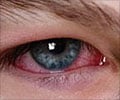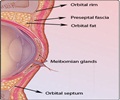Vision Disorders
Our eyes are a link to the world around us. They operate through a network of light mechanics. When trouble arises in the network of light, individuals experience visual disorders. Problems with vision differ in different individuals, and manifest themselves as different disorders. The main issues with vision involve, blurred vision, halos, spots in vision (scotomas), and allergies. In blurred vision, the individual is unable to see fine details of the area of vision. Individuals, who have blank spots in their areas of vision, are unable to see anything in those regions. Allergic reactions in eyes can cause conditions like conjunctivitis and dry eye syndrome, among others.
What are the different types of Vision Problems/ Eye Disorders?
Currently, there are nearly 56 reported disorders of the eye. Some of the common disorders of the eye are as follows:
Age-related Macular Degeneration (AMD): This condition affects older people resulting in blurring of vision in the centre of the eye. Age-related macular degeneration affects activities such as driving or reading. There is progressive degeneration of the retina in the central area and also the macula, hampering the resolution of fine details of the image in the field of vision. The 2 main types of AMD are dry and wet forms.
Cataract: Cloudiness in the eye lens leads to cataract. This condition is observed at any age, right from birth to an advanced age. Cataract leads to blurriness in vision and blindness, if not treated on time.
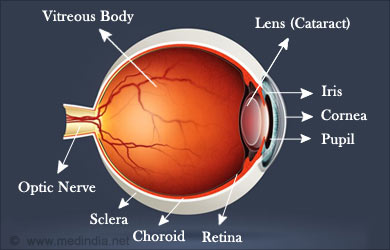
Glaucoma: Increase in pressure, within the eye, results in glaucoma. There is damage to the optic nerve with resultant loss of vision and even blindness. Glaucoma may also occur with normal eye pressure. There are 2 types of glaucoma: open angle and closed angle. Open angle progresses slowly and results in loss of vision after a prolonged period. Closed angle, in contrast, results in a painful loss of vision, forcing the individual to seek treatment immediately.
Refractive Errors
- Myopia - (nearsightedness): Individuals can only see nearby objects while objects at a distance are blurred
- Hyperopia - (farsightedness): Individuals can only see distant objects while those that are nearby tend to remain blurred.
- Astigmatism: Image is blurred and distorted due to an irregularity in curvature of the cornea or lens.
- Presbyopia: This is often seen in individuals between the ages of 40 and 50 years. These individuals are unable to read at a normal distance and need to place the reading material at a greater distance. There is an inability to focus at a close distance.
Diabetic retinopathy: Diabetic individuals are prone to diabetic retinopathy, which affects the blood vessels supplying blood to the retina. Both eyes are affected and blindness may result in diabetic individuals. There are 4 types of retinopathy, based on the number of blood vessels being blocked: mild nonproliferative retinopathy, moderate nonproliferative retinopathy, severe nonproliferative retinopathy, and proliferative retinopathy.
Amblyopia or Lazy eyes: Children are affected by amblyopia, when the coordination between one eye and the brain is reduced, leading to vision impairment in one eye compared to the other. The brain accepts signals only from one eye and hence the second eye, despite looking normal, tends to remain unused. Children with amblyopia or lazy eye may display myopia, heteropia, astigmatism, or strabismus.
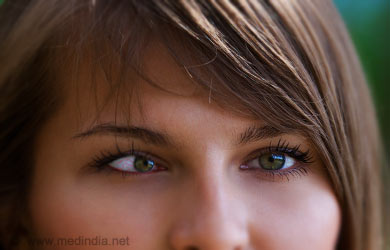
Strabismus or Crossed Eyes: This condition is often observed in children where the eyes do not line up in the same direction. The eyes do not focus at the same point on the object. The brain starts to ignore the signal of one of the eyes focusing only on the signal of one eye. This results in the second eye being unused, leading to blindness in that eye.
Allergic disorders:
- Conjunctivitis: Inflammation of the conjunctiva or swelling in the eye, results in redness or the eye turning pink.
- Allergic Conjunctivitis: Exposure to pollen or mold or other allergens causes eyes to become red, itchy, and watery.
- Allergic inflammation of the eyelid (blepharitis)
- Redness of the eye: Swelling of blood vessels within the eye are due to allergies, dust, dry air, and other factors.
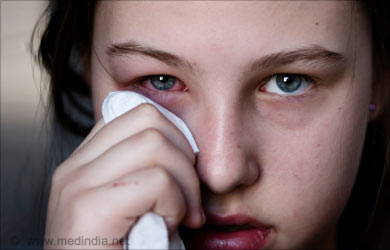
- Dryness of eyes: Deficiency in tears due to medications, environmental factors, or dry eye syndrome results in dryness of eyes.
- Presence of foreign object: An unknown particle or object that enters the eyes results in watering of eyes, redness, and pain, until the object is removed from the eye.
- Abrasion of the cornea: Scratches in the cornea occur due to contact with foreign objects or infected contact lenses, and may take a long time to resolve. It is a very painful condition and if not treated on time, may result in loss of vision.
- Eyelid sty: An inflamed area or bump on the eyelid, which is due to a bacterial infection. Recurrent events of appearance of sty or ones that last for long warrant investigation.
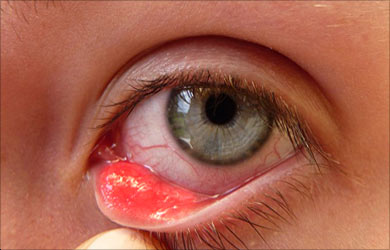
- Burning of eyes: Eyes are affected with a burning sensation and show discharge or itching.
Genetic conditions:
- Retinitis pigmentosa: This is a combination of inherited conditions that cause abnormalities in the retina, which may result in blindness.
- Usher syndrome: This inherited syndrome causes a combination of blindness (retinitis pigmentosa) and deafness.
- Cone-rod dystrophy: This is a rare, inherited disorder, where there is a slow deterioration of rods and cones of the retina. This condition eventually results in blindness.
Uveitis: The middle layer of the eye or the uvea is swollen and causes blurring of vision and pain in the eye.
Scleritis: This condition results when there is an inflammation of the sclera, the outer layer of the eye. It is painful and may result in loss of vision.
Photophobia: Individuals with photophobia are unable to tolerate bright light as the eyes are affected.
Colour blindness: This is an inherited condition, where the individual is unable to distinguish certain colours or in general, unable to distinguish any colour. Men are more affected by this condition.
Blindness: The inability of an individual to see anything is termed blindness.
Hazy vision: This condition results in a difficulty to observe anything clearly.
Myasthenia gravis: Individuals with myasthenia gravis have weak muscles due to a neuromuscular disorder. The individuals exhibit droopy eyelids and double vision.
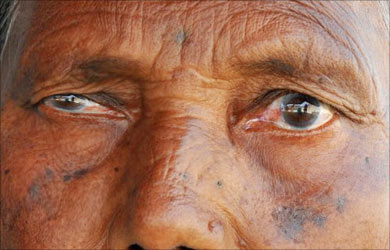
Adie’s pupil: This is a neurological condition, where one eye is larger than the other.
Ophthalmoplegia: This is a condition that results when there is a paralysis or weakness of eye muscles, resulting in weakened eye movements.
Optic neuritis: Inflammation of the optic nerve results in loss of vision in the affected eye. Vision is restored once the inflammation reduces.
Coloboma: This is a condition observed at birth, where certain structures of the eye are missing (eg, optic nerve, iris, or retina).
Sarcoidosis: Presence of clusters of immune cells in the eye, results in sarcoidosis. Itching eyes, dryness, and loss of vision characterize the condition.
Eye Floaters: These are tiny dark specks or strings that can be seen in your field of vision. These tend to increase with age and are usually harmless, but a sudden increase in number may indicate damage such as retinal detachment.
Visual disturbance: Certain disorders tend to cause imbalance in vision, resulting in visual disturbances.
Causes of Eye Disorders
- There are varied causes of vision problems. Some of the visual disorders are due to birth defects as observed in strabismus (crossed eyes), cataract, turned in eyelid, amblyopia, blindness, coloboma, and refractive errors.
- Genetics also plays a role in disorders of the eye such as retinitis pigmentosa, cone-rod dystrophy, and Usher syndrome.
- Diabetes type I, and type II, can cause visual impairment and cause diabetic retinopathy.
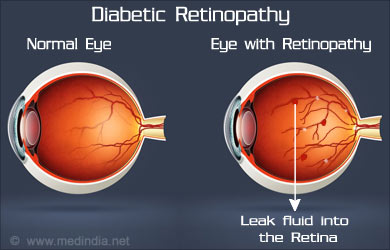
- Allergies cause conditions such as inflammation of eyelid, allergic conjunctivitis, and dry eye syndrome.
- Neurological conditions result in glaucoma, pterygium, eyelid twitch, colour blindness, hazy vision, ophthalmoplegia, Adie’s pupil, lazy eye, and myasthenia gravis.
- Infections, exposure to chemicals, smoking, and environmental factors are some of the other causes of visual disorders.
Home Remedies to Improve Eyesight
It is imperative to protect our eyesight, which is one of the primary means of communication with the world around us. The multiple preventive measures range from diet to exercise, and external protective equipment.
- Avoid smoking: Individuals should avoid smoking to prevent deterioration of eyesight. Smoking increases the risk of conditions such as glaucoma, age-related macular degeneration, dry eyes, cataract, and damage to the optic nerves.

- Multivitamins: It is recommended to take a multivitamin everyday to maintain good eye health. It has been observed that daily intake of multivitamins can prevent the development of age-related macular degeneration, and blindness. Women, who take vitamin C supplements daily, are less likely to suffer from vision problems.
- Diet: An appropriate diet can go a long way in reducing the risk of many eye disorders. Spinach contains a nutrient called lutein, which can protect against the risk of cataract and age-related macular degeneration. Other green leaves, such as kale, are rich in nutrients such as zeaxanthin and lutein. The antioxidant properties help to prevent cataract and AMD. Fish, when consumed twice a week, protects against dry eyes. Fish contains omega-3 fatty acids, which protect against dry eye syndrome. Fresh fish, fish oil, canned tuna, contain the required omega-3 fatty acids. Omega-6 fatty acids are found in packaged snacks, cakes, and cookies. Daily consumption can eradicate the protective effect of omega-3 fatty acids in the diet. Hence, one must exercise restraint and avoid daily consumption of foods rich in omega-6 fatty acids. Sweet potatoes, with their rich reserve of vitamin A, aid in preserving night vision. Blueberries are filled with antioxidants, which help in preventing age-related macular degeneration. Daily consumption of blueberries is highly recommended. Similarly bilberries contain anthocyanosides, which reduce the risk of macular degeneration. The risk of cataract is reduced with the consumption of red onions, which contain quercetin. A high-salt diet can increase the risk of cataract. Processed foods contain high levels of salt, and hence should be moderately consumed. A low-salt diet is highly recommended to prevent risks of eye disorders. Beets are a good addition to the diet since they contain antioxidants that protect the blood vessels of the eyes and the body.

- Blood pressure: Increased blood pressure can cause damage to the blood vessels in the eye. One must monitor blood pressure regularly. Increase in blood pressure can cause blindness.
- Dry air: The air in car vents should be directed away from the face to avoid the eyes from drying out. Similarly, in cold countries, during winter, the heaters in houses can dry the air within the house, and lead to a risk of eyes drying out. It is recommended that humidifiers should be used to increase the humidity within houses. Keeping plants in the house is another way of increasing humidity in the house.
- Walking: Individuals should go for brisk walks at least 4 times a day. This helps in reducing intraocular pressure for glaucoma patients, and even prevents the risk of glaucoma.
- Computer screen: Keep the computer screen below the eyes so that the eyelids are slightly closed and the eyes do not dry out. This is to avoid the risk of blindness or injury to the cornea. While working on the computer, or reading a book, one must look away after every 30 minutes to give the eyes a rest.

- Sunglasses: Eyes are protected against UV rays, the wind, and the sun’s glare by sunglasses. These environmental factors enhance the risk of AMD and cataract in unprotected eyes. Appropriate sunglasses that block UVA and UVB rays, and polarized sunglasses that block the sun’s glare during driving are recommended. UV-protective contact lenses are another option for those wearing eyeglasses. Individuals who also wear broad-rimmed hats, along with sunglasses, prevent exposure of the eyes to the glare of the sun, UV rays, and to the wind.
- Safe eyewear: One must wear protective goggles while swimming to prevent excess exposure of eyes to chlorine in the pool. Individuals, who work in professions such as carpentry, should wear protective eyewear. This avoids splinters from entering the eyes. One must wear protective goggles when using hazardous, airborne chemicals.

- Eye makeup: Individuals should change their eye makeup every year. Bacteria, that builds up in the makeup can get transferred to the eyes. Mascara should be changed every 3 months. Mascara should be removed with an eye makeup remover to avoid pieces of the mascara from damaging the cornea.
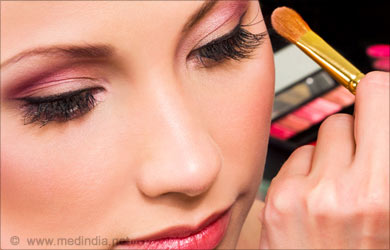
- Fresh towel: One must use a fresh towel each day to wipe the face and eyes, and one must avoid sharing the towel. Sharing transmits infections such as conjunctivitis.



